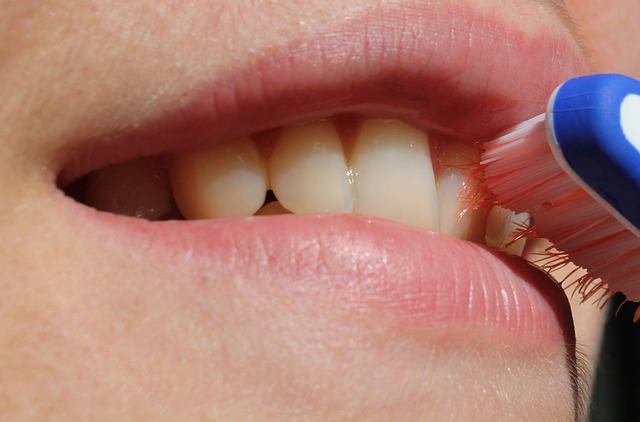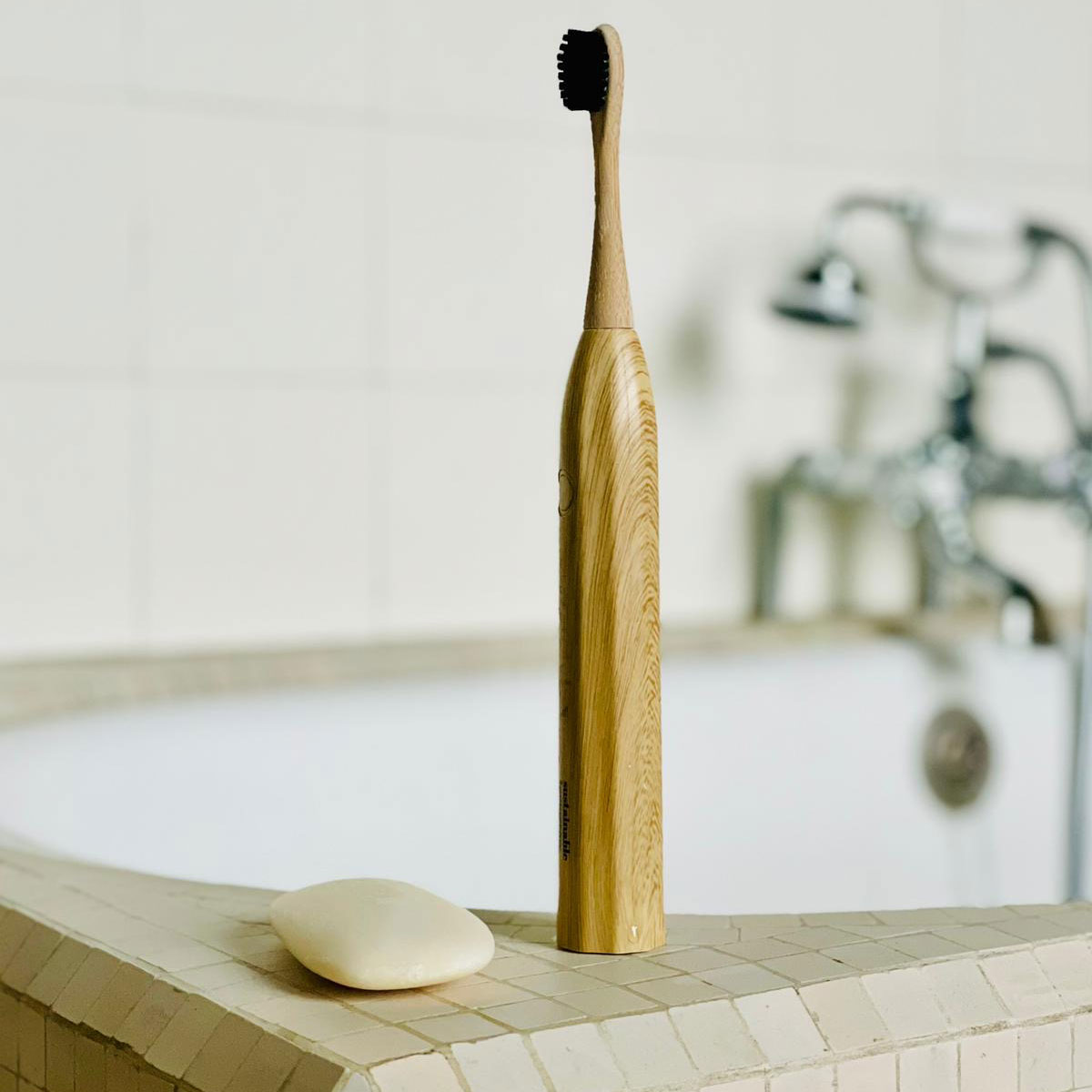Explanation of the common problem of bleeding gums during toothbrushing
Many people experience the common problem of bleeding gums during toothbrushing. This issue can be concerning, but it is important to understand the potential causes and how to address them. From using the wrong toothbrush to underlying health conditions, there are several reasons why gums may bleed during brushing.
Understanding the root cause can help individuals take the necessary steps to improve their oral health. In this article, we will explore the explanations behind the common problem of bleeding gums during toothbrushing and provide tips on how to address and prevent it.
Importance of addressing the issue promptly
When faced with the common issue of bleeding gums during toothbrushing, it becomes paramount to understand the importance of swift action and avoid aggressive brushing. Delaying the resolution of this concern can lead to a cascade of consequences, both for your oral health and overall well-being.
Consequences of Procrastination
The repercussions of neglecting bleeding gums extend beyond the realm of dental health. Not addressing this issue promptly can result in increased costs for treatments and negatively impact various stakeholders involved. The potential damage isn't limited to the individual alone; it permeates into broader aspects of life.
Reputational Risks and Trust Erosion
Failure to address bleeding gums promptly can have severe consequences for a company's reputation. In the dental care industry, where trust is a cornerstone, prolonged negligence may lead to a loss of customer trust. Patients of dental professionals rely on oral health professionals not just for treatments but also for guidance and timely solutions.
Swift Action: Minimizing Damage and Building Confidence
Taking immediate action in the face of bleeding gums is not just about resolving the current issue but also about preventing further damage. Swift intervention minimizes the risk of escalated oral health problems, showcasing a proactive approach to problem-solving.
Benefits of Timely Resolution
Addressing bleeding gums promptly comes with an array of benefits. From preventing potential oral health complications to safeguarding the reputation of oral care providers, swift action demonstrates a commitment to patient well-being. It fosters confidence among patients, showcasing a dedication to delivering effective and timely solutions.
The importance of addressing the issue of bleeding gums promptly cannot be overstated. Beyond the immediate oral health concerns, the consequences of delays extend to financial implications and reputation risks. Taking swift action not only minimizes damage but also cultivates a sense of trust and confidence, essential elements in the realm of dental care.
Understanding Gum Health
Maintaining optimal gum health is pivotal for a comprehensive oral care routine. Healthy gums provide crucial support to your teeth and contribute to overall well-being. In this section, we embark on a journey to explore the intricacies of gum health.
From understanding the anatomy and function of gums to recognizing early signs of issues, we'll equip you with knowledge to address concerns promptly. Proactive care not only safeguards your dental health but also prevents potential complications that could lead to increased costs and discomfort. Let's delve into the fundamental aspects of gum health for a brighter, healthier smile.
Overview of gum anatomy and function
Proactive oral care is vital, especially when confronted with the concern of bleeding gums during daily brushing. Timely attention to this issue is crucial, preventing potential escalated costs and safeguarding the well-being of your oral health.
The Components of Gum Anatomy
Understanding the intricate structure of gum anatomy sheds light on the functions that contribute to overall oral health. The gingiva, periodontal ligament, and alveolar bone collectively form the foundation that supports and protects your teeth.
- Gingiva: A Protective Barrier: The gingiva, commonly known as the gums, is the visible soft tissue that surrounds the teeth. Serving as a protective barrier, it acts as a resilient shield against external threats, preventing bacteria from infiltrating the tooth roots and surrounding structures. Its role in maintaining a robust defense mechanism is paramount.
- Periodontal Ligament: Anchoring Teeth Firmly: The periodontal ligament plays a pivotal role in anchoring the teeth within their sockets. Comprising a network of fibers, it connects the tooth roots to the alveolar bone, ensuring stability and resilience during the forces exerted while chewing. This connection is essential for maintaining tooth alignment and overall structural integrity.
- Alveolar Bone: The Foundation of Stability: The alveolar bone forms the foundation that supports the teeth. It surrounds and encapsulates the tooth sockets, providing stability and structure. A healthy alveolar bone is crucial for sustaining the proper positioning of teeth, enabling effective chewing, and contributing to overall oral function.
Gum Tissue: Key to Tooth Stability and Periodontal Defense
Collectively, these components of gum anatomy work in harmony to maintain tooth stability. The gingiva acts as a vigilant guardian, the periodontal ligament ensures secure anchoring, and the alveolar bone provides a robust foundation. Together, they facilitate proper chewing, essential for effective digestion, and help ward off the onset of periodontal diseases.
Discussion on how gum disease develops
Gum disease poses a significant concern in oral health, demanding timely attention to prevent escalated costs and adverse effects on stakeholders. The progression from gingivitis to periodontitis marks a crucial journey, revealing subtle indicators that should not be overlooked.
Recognizing the Stages: Gingivitis to Periodontitis
Gingivitis, the initial stage of gum disease, often manifests with bleeding gums during brushing. If left unaddressed, it advances into periodontitis, a more severe condition involving the inflammation of the tooth-supporting structures. Symptoms include persistent bad breath, receding gums, and even tooth loss.
Importance of Oral Hygiene Habits
The development of gum disease underscores the importance of maintaining impeccable oral hygiene brushing habits. Regular brushing, flossing, and professional dental cleanings are pivotal in preventing and combating these conditions. Consistent oral care acts as a shield against the progression of gingivitis to more severe forms.
Available Treatment Options
Addressing gum disease promptly opens doors to various treatment options. Scaling and root planing, antibiotic medications, and in severe cases, surgical procedures may be recommended. Timely intervention not only ensures effective treatment but also mitigates potential financial burdens associated with advanced stages of gum disease.
Key Contributors to Gum Disease
Understanding the factors contributing to gum disease aids in its prevention. Poor oral hygiene practices, such as inconsistent brushing and flossing, create an environment conducive to bacterial growth. Individuals wearing braces or retainers face heightened risks, emphasizing the need for meticulous care in these cases.
Acknowledging the stages, symptoms, and preventive measures against gum disease is pivotal. By fostering good oral hygiene practices and promptly addressing any signs of trouble, individuals can steer clear of escalated costs and preserve their oral health.
Link between poor oral hygiene and gum problems
Neglecting oral health reverberates in the form of gum problems, a concern that demands attention. The absence of a diligent oral care routine, encompassing proper brushing and flossing, creates an environment ripe for gum diseases and infections to flourish.
Understanding the Consequence
Gum problems often stem from poor oral hygiene practices. When brushing and flossing become inadequate, plaque accumulates, inviting bacteria to settle along the gumline. This can lead to gingivitis, an early stage of gum disease characterized by inflammation and bleeding.
The Domino Effect
Unchecked, gingivitis can progress to more severe forms of gum disease. As the condition advances, pockets form between the teeth and gums, becoming breeding grounds for bacteria. Left untreated, this can result in periodontitis, causing irreversible damage to the supporting structures of the teeth.
Costs of Delay
Addressing gum problems promptly is not merely a matter of oral health; it's a financial consideration. Delaying treatment can escalate costs, ranging from advanced dental procedures to potential tooth loss. The negative impacts extend beyond individual health, affecting stakeholders like employers and insurance providers.
Prevention Through Routine
Preventing gum problems necessitates a robust oral health routine. Regular brushing, flossing, and dental check-ups form the backbone of preventive care. Incorporating these brushing habits into daily life helps combat plaque buildup, reducing the risk of gum disease and its associated complications such as dental issues.
Tips for Improved Oral Hygiene
- Consistent Routine: Establish a regular oral care routine and adhere to it diligently.
- Proper Technique: Ensure correct brushing and flossing techniques for maximum effectiveness.
- Dietary Awareness: Be mindful of sugar intake, as it contributes to plaque formation.
- Regular Check-ups: Schedule routine dental visits to detect and address issues in their early stages.
Recognizing the link between poor oral hygiene and gum problems is pivotal. Timely intervention not only preserves oral health but also mitigates financial burdens. By embracing a proactive approach and fostering good oral brushing habits, individuals can safeguard their well-being and maintain healthy gums throughout their lives.
Causes of Bleeding Gums while Brushing
Encountering bleeding gums while brushing can be a concerning experience. It's crucial to identify the potential causes behind this occurrence to address the issue effectively. One prevalent factor contributing to bleeding gums is gingivitis, the initial stage of gum disease.
By shedding light on the various reasons, we aim to empower you with knowledge that can assist in promoting better oral health practices and preventing further complications. In this section, we'll explore the specifics of gingivitis and its role in the manifestation of bleeding gums during your daily dental routine.
Gingivitis - The initial stage of gum disease
When it comes to the causes of bleeding gums while brushing, one significant factor often surfaces – gingivitis, the initial stage of gum disease. Recognizing the signs of gingivitis is crucial for maintaining optimal oral health.
Common Signs of Gingivitis
- Irritated Gums: Gingivitis often manifests as gums that appear red and irritated. If you've noticed a change in the color of your gums, it might be an early indication.
- Swollen Gums: Gingivitis can cause the gums to swell, creating a puffy and tender sensation. This swelling is often accompanied by discomfort.
- Bleeding Gums: Perhaps the most noticeable sign, bleeding gums during brushing indicate the presence of gingivitis. If you regularly observe blood on your toothbrush or in the sink after brushing, it's time to pay attention.
- Plaque Buildup: Gingivitis is frequently associated with the accumulation of plaque along the gumline. This sticky film of bacteria can lead to inflammation and bleeding if not adequately addressed.
Taking Control with Good Oral Hygiene
The good news is that gingivitis is a reversible condition, and taking proactive measures in your daily oral care routine can make a significant difference. Implementing the following practices can help prevent and treat gingivitis effectively:
- Brushing Twice a Day: Regular brushing, at least twice a day, is a cornerstone of good oral hygiene. Use a soft-bristled toothbrush type and fluoride toothpaste to gently clean your tooth surface and gums.
- Daily Flossing: Flossing is essential for removing plaque and debris from between your teeth and along the gumline. Incorporate daily flossing into your routine to maintain optimal gum health.
- Antibacterial Mouthwash: Using an antibacterial mouthwash can complement your brushing and flossing routine. It helps reduce bacteria in the mouth, promoting a healthier environment for your gums.
- Regular Dental Check-Ups: Scheduling regular dental check-ups allows your dentist to detect and address gingivitis in its early stages. Professional cleanings and guidance from your dentist contribute significantly to preventing gum disease.
Addressing Gingivitis – The Initial Stage Matters
Addressing gingivitis is paramount in preventing its progression into more severe forms of gum disease. By recognizing the signs early on and adopting a diligent oral care routine, you take a proactive stance against potential complications. Remember, your oral health is a vital component of your overall well-being, and addressing gingivitis promptly ensures a healthier smile for the long run.
Understanding the signs of gingivitis empowers you to make informed decisions about your oral care. Embrace the practices of good oral hygiene, and let your commitment to a healthy smile be the driving force in preventing and addressing gingivitis – the initial stage of gum disease.
Discover our Sustainable Electric Toothbrush
In the quest for an eco-friendly dental hygiene during your traveling journey, our Sustainable Electric Toothbrush stands out as the epitome of conscious oral care. Crafted with a commitment to sustainability, every aspect of this innovative toothbrush aligns with the principles of environmental responsibility.
Eco-Conscious Design
Embrace a greener oral hygiene routine with an electronic toothbrush designed for the eco-friendly bathroom. The materials used in the construction of our electric toothbrush are either compostable, biodegradable, or recyclable, ensuring a minimal ecological footprint compare to manual toothbrushes.
Prolonged Battery Life and Intelligent Features
Experience the convenience of an extra-long battery life, especially during an extended trip, granting you up to one month between charges. The toothbrush boasts five cleaning modes, ensuring a thorough and customized brushing experience. The built-in timer, a hallmark of effective oral care, guides you to achieve the perfect brush every time.
Renewable Resources for a Greener Tomorrow
With every purchase, receive a one-year supply of replaceable brush heads crafted from bamboo, the fastest-growing plant on Earth. The bristles, derived from castor bean oil, contribute to a toothbrush that is 100% organic bamboo and plastic-free. Bid farewell to the guilt associated with plastic toothbrushes as our bamboo toothbrush brush heads last as long as their plastic counterparts.
Key Benefits for a Healthier Smile
Unleash the potential for a healthier smile with our Sustainable Electric Toothbrush:
- ✅ Up to 7x Healthier Gums in 2 Weeks compare to manual toothbrushes
- ✅ Removes up to 10x More Plaque compare to a manual brush
- ✅ Sonic Technology with 5 Cleaning Modes
- ✅ 3 Intensity Levels Reaching up to 38,000 VPMs
- ✅ Zero Waste Sonic Toothbrush & Packaging
- ✅ 4 Hours Charge for Up to 30 Days Use
- ✅ 2-Minute Quadratic two-minute Timer for Proper Brushing
Five Cleaning Modes Tailored to Your Needs
Choose from five cleaning modes, each designed to address specific oral care needs:
- Clean: Effectively removes up to 10x more plaque compared to manual toothbrushes.
- White: Ideal for achieving a healthy smile and eliminating surface staining.
- Polish: Polishes and whitens teeth using lower frequency vibrations.
- Sensitive: Gentle on teeth and gums, suitable for those with mild tooth sensitivity.
- Gum Care: Tailored for individuals with mild gum and tooth sensitivity.
Responsible Disposal and Plant-Based Soft Bristles
Our commitment to sustainability extends beyond the product itself. To properly dispose of each replacement brush head, place it in a compost bin, where it will decompose in approximately six months. The plant-based soft bristles, made from castor seed oil, will eventually break down in a home composting environment, contributing to a greener planet.
While the replacement brush heads are crafted from raw bamboo, the toothbrush handle is made of plastic to comply with safety requirements. Embrace the journey towards sustainable oral care with our zero waste sonic toothbrush type, designed to make a positive impact on your oral health and the environment.

Get 10% off using the code "ZEROWASTE10" and get your Zen Bamboo Electric Toothbrush today.
Do you own one of Philips Sonicare smart electric brushes? We got you covered with our compatible bamboo toothbrush heads.






Share:
How often should you change your toothbrush?
How to cure gum disease without a dentist?